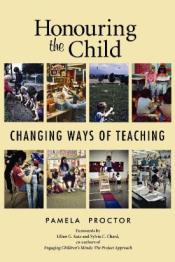
The teacher had a task so subtle, so exacting, that a traditionally trained teacher could scarcely hope to comprehend it at a glance. It is so simple, it is difficult.One afternoon, in the spring of our first year, after the activity session had just started, I was sitting in the math centre amidst a sea of active children. The sun was streaming through the window. I was basking for a moment in its warmth and light, soaking up the sights and sounds that surrounded me. In a reverie, I was likening myself to the conductor of a large orchestra, losing myself in the beautiful music it was playing. I stirred, feeling a little uncomfortable sitting idly--the old way was never to get caught sitting down. At the same time I was suddenly startled by the thought, "They're all busy. Now what do I do?" When I brought the question to the team later, it triggered a new phase in the development of our understanding of our work. In the ensuing months, as we reflected on what we had accomplished, we began identifying and defining our role. We had formed the framework and provided a nurturing environment. We had established standards, creating an atmosphere of mutual respect and trust. We were planners and creators. We were role models, setting an example for the children. They were following by talking and working together. We were guides as we showed the children the materials, explained where they were kept and discussed the possibilities for their use. We were helpers and supporters, encouraging the children to take more responsibility for their own learning and helping them in the process. However, we were responsible for the children's learning and we needed to define what we were to do during activity times. Lillian Weber sums up the teacher's role succinctly: "Teaching gives way to helping learning." We needed to address ways of doing that. Together we arrived at an understanding as each of us shared our insights. As for me, it may seem that the answer should have been obvious given my experiences. But it was in doing rather than observing as I had in Britain that I realized I still had things to consider. I knew I had to stop grasping and let go, putting past perceptions and expectations aside. My head knowledge had to become heart knowledge. Both had to be incorporated into my unconscious for a true change. It was to be several years before I was finally able to get "the idea" more firmly. What kept evading me was simple and central. I had to focus on the children.
I had to help the children develop on a broad front, emotionally, socially and physically as well as intellectually, knowing that growth in all areas leads to optimum growth in each. I had to feel comfortable with the widening gaps in their progress, allowing them to learn according to their own interests and capabilities. I think it was David Elkind who once pointed out that it is important to concentrate on getting to know the child instead of on what one wants the child to know. Easy to say, but I had to repeat and practice it in order to internalize it. It had to become part of the fabric of my being. Once there, it helped me to stay on course protecting me from being buffetted by other influences. Wilf Wees wrote a book called Nobody Can Teach Anyone Anything. As I became aware of my changing concepts re teaching, I realized that Wee's title spoke volumes. I also knew why I found no specific instructions when I was on exchange in England or when I was at university. To explain exactly how to work with children in this way would be like trying to tell someone exactly how to climb Mt. Everest, impossible for the same reasons. Even with the same main aim, every situation is different. The people and the parameters vary greatly. One has to forget any thought of a formula. Rather, with an awareness of the principles involved, one has to focus and concentrate fully on the children and the particular task at hand, moment by moment. Just as the wings on a large airplane need to be flexible for it to fly safely, we had to also be flexible in order for the program to work. Each of us had to drop rigid ideas and not only be willing to change but to continue to be open to each other and to the children. I would have been of little use had I broken concentration by interrupting the children that afternoon, or indeed, at any time when they were deeply absorbed. I had to learn to let them get on with it. Anne pointed out the value of the times when we could be observers, another important aspect of our role…….. To order this book please see Ordering Information
|
Home |
About the Author |
How to Order |
Latest News | Reviews |
|


